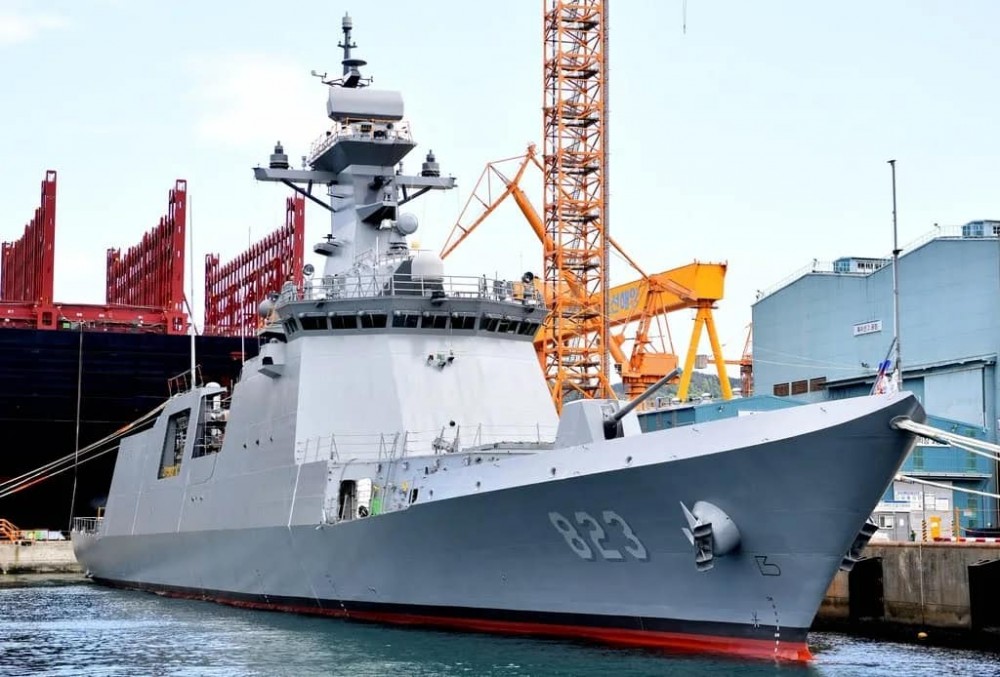Tsavo Lion wrote:S. Korea may acquire nuclear subs after North’s test
As if they don't have other things to spend $ on!
Unless they plan on going after Japan
 Re: South Korea Armed Forces
Re: South Korea Armed ForcesTsavo Lion wrote:S. Korea may acquire nuclear subs after North’s test
As if they don't have other things to spend $ on!
 Re: South Korea Armed Forces
Re: South Korea Armed ForcesPapaDragon wrote:Tsavo Lion wrote:S. Korea may acquire nuclear subs after North’s test
As if they don't have other things to spend $ on!
Unless they plan on going after Japan
 Re: South Korea Armed Forces
Re: South Korea Armed Forcesa nuclear triad consists of ICBMs, long range bombers, & SSB/Ns, but NK+SK don't have nor need long range bombers.In case of reunification North Korea will have the nuks and South Korea the nuclear submarines ==》 nuclear triade.
 Re: South Korea Armed Forces
Re: South Korea Armed Forcesa nuclear triad consists of ICBMs, long range bombers, & SSB/Ns, but NK+SK don't have nor need long range bombers.
So together, they'll have ICBMs, BM subs, tactical nukes on medium range fighter bombers, SSNs, & SSKs.
 Re: South Korea Armed Forces
Re: South Korea Armed ForcesChina isn't a threat to SK anymore, she can use her NK ally to keep her in line. USFK will be reduced again, & SK may eventually ask them all to leave. China also needs SK as an ally against Japan.Their main threat are China and Japan.
 Re: South Korea Armed Forces
Re: South Korea Armed Forces Re: South Korea Armed Forces
Re: South Korea Armed Forces Re: South Korea Armed Forces
Re: South Korea Armed Forces Re: South Korea Armed Forces
Re: South Korea Armed ForcesGomig-21 likes this post
 Re: South Korea Armed Forces
Re: South Korea Armed Forces Re: South Korea Armed Forces
Re: South Korea Armed Forces Re: South Korea Armed Forces
Re: South Korea Armed Forces Re: South Korea Armed Forces
Re: South Korea Armed Forces
 Re: South Korea Armed Forces
Re: South Korea Armed ForcesGomig-21 likes this post
 Re: South Korea Armed Forces
Re: South Korea Armed Forces
 Re: South Korea Armed Forces
Re: South Korea Armed Forces


PapaDragon and lancelot like this post
 Re: South Korea Armed Forces
Re: South Korea Armed ForcesPapaDragon and lancelot like this post
 Re: South Korea Armed Forces
Re: South Korea Armed Forces Re: South Korea Armed Forces
Re: South Korea Armed Forces

 Re: South Korea Armed Forces
Re: South Korea Armed Forces
 Re: South Korea Armed Forces
Re: South Korea Armed Forces
 Re: South Korea Armed Forces
Re: South Korea Armed Forces Re: South Korea Armed Forces
Re: South Korea Armed ForcesThat is PR speak for: the US has not/will not allow tactical nukes under the command of South Korea.George1 wrote:
In the official video released by the Ministry of National Defense of South Korea on October 1, 2022, dedicated to the Day of the Armed Forces of South Korea, traditionally celebrated on October 1, the new and previously unknown South Korean ballistic missile Hyunmoo 5 (V) "with the largest mass warhead in the world." The mass of the warhead of the Hyunmoo 5 rocket, according to South Korean media. allegedly can be from 8 to 9 tons.
 Re: South Korea Armed Forces
Re: South Korea Armed Forces